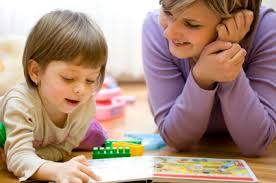There are many times when I (attempt to) write with a bit of humor. Today is not one of those. This particular post has been on my mind for weeks, and I’ve been contemplating how best to address what I consider one of the most serious challenges facing today’s parents and youth.
I’m talking about social media. When I refer to social media I include: Facebook, Instagram, Snapchat, Twitter, Kik and other similar applications available. There are many, and our children navigate them with ease and speed.
All parents must be prepared to address the complexities that come with our children’s and teens’ use of these online resources, and we all must recognize the related concerns and dangers facing every child growing up in our culture.
My kids are 12 and 16. Neither of them had their own devices at early ages, which I would consider to be 7 or 8. However, every family has unique opinions about what is age-appropriate. Typically, families that are more tech savvy are comfortable introducing these items earlier than families that are not as familiar with today’s technologies. For my purposes, “devices” refers to a range of phones, iPods, iPads and more, because social media applications can be accessed from many of the electronics kids are regularly equipped with.
No matter ho w protected or even isolated your children are from social media, they all will have opportunities to use them—opportunities to make good or poor choices. Even though your child may not be using social media, you can be certain their friends are. And, as kids grow older, they may be encouraged to utilize social media tools for connecting and keeping up with school and extra-curricular activities. Few adults can resist all forms of social media, and resistance is nearly impossible for youth of today. They must learn how to function safety and appropriately when using social media. Like so many things in our lives, they must learn to use this helpful resource wisely without it becoming a hindrance and problem in their lives.
w protected or even isolated your children are from social media, they all will have opportunities to use them—opportunities to make good or poor choices. Even though your child may not be using social media, you can be certain their friends are. And, as kids grow older, they may be encouraged to utilize social media tools for connecting and keeping up with school and extra-curricular activities. Few adults can resist all forms of social media, and resistance is nearly impossible for youth of today. They must learn how to function safety and appropriately when using social media. Like so many things in our lives, they must learn to use this helpful resource wisely without it becoming a hindrance and problem in their lives.
So, what are these poor choices kids make and the problems kids have when using social media? Here are three categories of errors that I have observed and survived. And, let’s be honest, if your child has made no bad decisions in their online activities, you are among the fortunate few. It happens to almost all of them, and all of us parents, accordingly. It’s embarrassing, frightening and frustrating, and between my two children mistakes in each category below have been made.
1) Behaving (with words or pictures) in a controversial, inappropriate or vulgar manner.
- Posting polarizing views about politics, religion or current issues.
- Posting foul language in acronym form or otherwise.
- Posting photos that are unseemly or do not demonstrate good, moral character.
Here, we see teens, and perhaps more often boys, take a position about some highly-charged issue and freely post that view. This is to be done very carefully. Our kids are going to apply for scholarships and colleges, and seek jobs. Being very free with our thoughts, even though they may not be wrong or immoral, is not smart. Kids are still forming opinions. They aren’t wise enough yet to fully “own” opinions on our country’s difficult issues.
Also, we see girls and boys knowingly post foul language and immodest photos. Young people may feel okay about doing this if they’re on social media a lot and watching the behaviors of others. If they see someone they know or admire posting something, they may think it’s cool and acceptable whether it is or not. Their temptation to participate in the conversation can outweigh their desire to behave in a manner considered Godly and admirable within their home and family.
2) Inadvertently posting/sharing something without understanding the intent.
- Sharing a video or photo or article without recognizing the source for what it was.
- Clicking when they should resist and realizing afterward the evil nature of the item.
- Sharing an item from someone known without considering if it’s right for them to share.
Sometimes children don’t know what they are sharing. What they may consider to be a funny picture may have been originally placed online by some magazine or group that is connected with drugs or something illicit. They don’t take time to exercise caution or investigate like adults do. They don’t have a knowledge base that we do, either. Or, they may take for granted that something is okay, because it was connected with someone they do know.
3) Ignoring or not recognizing the dangerous element also on social media.
- Communicating with those they don’t directly know.
- Connecting with far too many people in their social media.
- Spending too much time on social media.
Lastly, our kids are just naïve about what is lurking, or really just hanging out, in cyberspace. They think we are overstating the dangers as their parents, and they will “talk” to strangers online. The big issue is no longer just convincing them never to take candy or a ride from a stranger. Now, we have to take that conversation to their online interactions, too. With increased numbers and increased time, the concerns can become greater.
I know this has been a long post, so forgive me. This is important, though, and I feel we all need to be united as parents in this struggle. Next week, I will give you ten strategies for teaching our children and teens, and taking on this issue.
Happy Monday,
Hally






